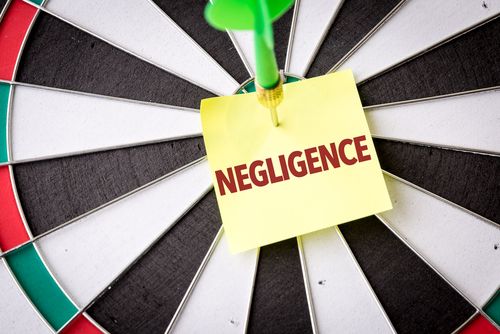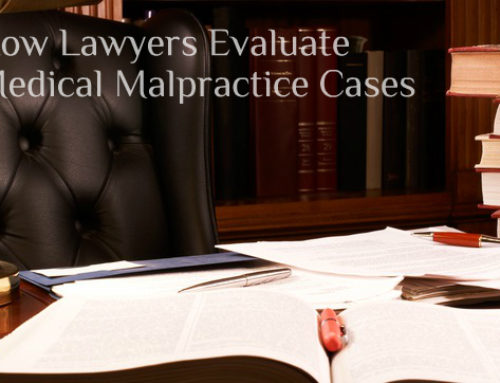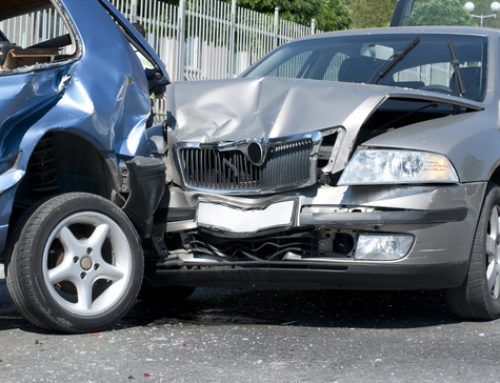Whether they are business owners or individuals, many people are understandably concerned with what the term liable means and how it may affect them either as a defendant or a plaintiff. While the specifics are complex, the fundamentals of this legal concept are quite easy to comprehend. To provide an authoritative legal dictionary definition, liability is…
“A legally enforceable claim on the assets of a business or property of an individual. In business, liability results from a breach of duty or obligation by act or failure to act. Liability also refers to the debt or obligation of a business in contrast to its assets.”
For the purposes of this article, we are going to focus specifically on claims which result from a failure to prevent some form of damages to an individual or group of individuals, who can demand compensation. These damages to a plaintiff’s person or property can be the result of any number of things, including the circulation of defective products, poorly maintained infrastructure, or the defendant engaging in some form of risky behavior.
Within this larger legal concept, there are three primary types of being liable: intentional tort, negligence, and strict liability.
Intentional Tort
To begin, intentional tort court cases involve a defendant who intended to deliberately cause harm to a victim’s person, reputation, or their property, rather than as a consequence of irresponsible behavior. Consequently, it is incumbent upon the court to demonstrate the validity of either the general or specific intent. Within this legal concept exists seven common law forms of intentional tort. They are:
Assault and battery – Though these could be segregated for being technically different, assault and battery both refer to an occurrence in which the physical safety of an individual is deliberately threatened by words or actions. Specifically, assault relates to a threat of violence, while battery is the actual act of causing physical harm.
Conversion – In the realm of civil law, this is the same as theft. Further, conversion means to take possession of a plaintiff’s property without permission, even if that property was later returned.
Trespass to land – As the name would suggest, this means encroachment upon someone’s property without permission or interfering with an individual’s ownership of their property. This form of intentional tort is somewhat unique in that the plaintiff only need demonstrate that the defendant did enter into their real estate, rather than prove intent to do so. That said, greater damages can be given if intent can be demonstrated.
False imprisonment – This refers to either threatening to use physical force or the application of force itself to detain an individual under unwarranted or legally unjustified reasons. Note: this charge can apply to police officers, private security guards, or some other civilian such as a storefront manager.
Intentional infliction of emotional distress – This term refers to actions in which emotional distress is induced in a plaintiff through “extreme or outrageous” acts. To be sure, these specific acts can be difficult to define and will be up to the judge to determine whether or not the alleged acts qualify as being sufficiently offensive to make the case valid.
Defamation – If a defendant has made one or a series of statements which they knew to be false about one or more individuals and this caused some form of harm, they have committed defamation. Though the necessity to prove harm doesn’t apply in every case, much like intentional infliction of emotional distress, defamation can be difficult to prove.
Though not recognized throughout all of the United States, there is what is known in some jurisdictions as a “catch-all” intentional tort, if a case doesn’t fit the above-described categories. Of course, the burden of proof differs between states, but minimal requirements generally state that some form of harm had been committed by the defendant.
Negligence
The second significant – and perhaps the most important – form of liability is referred to as negligence that has resulted in bodily harm. In fact, negligence is the most common form of civil liability case that there is.
In most jurisdictions, negligence requires four specific criteria, the first being that the defendant had some form of duty. Second, the defendant is in breach of the duty or legal obligation that they had accepted. Third, the defendant’s inability to carry out an obligation or their breach of duty resulted in some form of bodily injury. Finally, said injury has resulted in recoverable damages.
Within the concept of negligence there are three subsets which are acknowledged by most states in America: criminal, gross, and lastly, slight negligence, though some US states may differ.
Slight negligence – Otherwise known as absence of foresight or mere negligence, this refers to an instance wherein an individual fails to exercise a significant amount of care, which normally would be exhibited by a cautious individual. As the term would suggest, this is the least egregious form of legal negligence.
Gross negligence – Also called reckless disregard, an act equivalent to this tier of negligence is when an individual acts in a completely reckless manner and doesn’t take any care to protect others, which patently will lead to harm. Further, this typically means that the defendant consciously engaged in risky behavior.
Criminal negligence – Ostensibly, this tier is in many ways identical to gross negligence. As with reckless disregard, criminal negligence requires that the defendant intentionally engaged in dangerous behavior and failed to take actions to make the offended party safe.
The substantial difference is that with recklessness, the plaintiff is often punished with a fine or required to financially compensate the offended party. In a criminal negligence case, however, the offender is assigned a prison sentence. The degree of dangerous behavior, if extreme enough, may deem an act to be criminally negligent.
In all of the above examples, the validly of the suit and the damages awarded are based off of what is known as “standard of care.” Standard of care refers to the amount of vigilance against potential harm the defendant should have invested in. Typically, in general negligence cases, the definition of how much care a defendant should have varies on a case by case basis and is up to the judge presiding over the case. That said, a number of circumstances can influence this decision, including the specifics of any agreements made between plaintiff and defendant or applicable community guidelines.
Further, in the aforementioned examples, a court can rule a defendant negligent if their behavior reflects an inability to exercise reasonable care without citing a specific statute.
It is worth noting that the law also recognizes what is referred specifically to as negligence per se in which injury has resulted in an individual or business being in violation of a regulation or statute. In this form of negligence, the standard of care is determined specifically with respect to what regulatory laws exist on the books.
An example of negligence per se would be an auto accident in which the defendant caused the plaintiff to crash their vehicle as a result of the former engaging in reckless driving or by exceeding the speed limit.
Strict Liability
Finally, strict liability cases only examine whether or not harm has befallen the plaintiff, regardless of whether or not the defendant was negligent or intended to cause harm, but the defendant is directly responsible for harm coming to the plaintiff. Examples of strict liability include injury occurring from a dog owner’s animal biting an individual after either escaping the defendant’s property or attacking someone while being walked.
Some of the most common forms of strict liability cases involve companies whose poorly manufactured or defective products malfunction or lead to physical harm despite being used for their intended purpose.
Why Understanding This Matters
The circumstances which lead to a liability case are quite often disruptive, if not traumatic for the affected person. More importantly, were the offending party to exercise responsibility, the financial and physical loss could have been avoided.
When you believe you’ve purchased clearly defective products or have been injured due to another individual’s heedless actions, you shouldn’t postpone litigation indefinitely.
Time is a factor when pursuing liability and the law is quite strict with respect to the statute of limitations on any given case in which someone might be liable. In addition to that, limitations vary markedly by each state. They range from as much as six years to file a claim to as little as just a year.
That is why, if you do end up in the unfortunate position of being the victim of another’s carelessness, you need to initiate legal proceedings as quickly as possible.
Need Help Further Understanding or Pursuing a Liability Claim?
Recovering financially, physically, and emotionally from the result of someone’s incompetence is a serious matter – and you deserve the best assistance to receive what you are owed. Fortunately, we at Ingerman & Horwitz have years of experience in pursuing and collecting damages from negligent bad actors and getting clients peace of mind. In fact, for over twenty years our firm has been serving the people of Maryland with the utmost levels of professionalism and excellence.
To find out more about how we can help you fiscally recover from bad actors or ineptitude, give us a call at our toll-free number 1-800-776-4LAW (4529) or send us an email through our website messenger.















